Preparing Floor For Terrace Gardening
Want a definitive guide to setting up an organic terrace garden in your homes? Terrace Gardening for Beginners is your guide to getting started. Life in the city is great for the most part – easy access to shopping and entertainment centers as well as better living conditions, which makes it an ideal place to live. But city life has its drawbacks too! Overcrowded streets, congested lanes, air and noise pollution for starters.
Greenery is becoming a thing of the past. Trees are recklessly cut down to accommodate more houses. River beds are turning into housing complexes and our daily commute is spewing more and more toxins into the air. Cities are getting hotter and hotter and climate change more erratic.

We earn more and buy more but the quality of our lives has declined. It's not just toxic air that we are breathing, the food that we eat is becoming equally toxic. Indiscriminate use of pesticides and fertilizers are causing birth defects and abnormalities; cancer is on the rise and yet we turn a blind eye to our actions.
But it doesn't have to be so!
You don't have to take a 30 minute ride to a park or a beach to unwind and enjoy a bit of fresh clean air. You can create a green space right in your home and make a whole lot of difference. And its not as hard as you think!
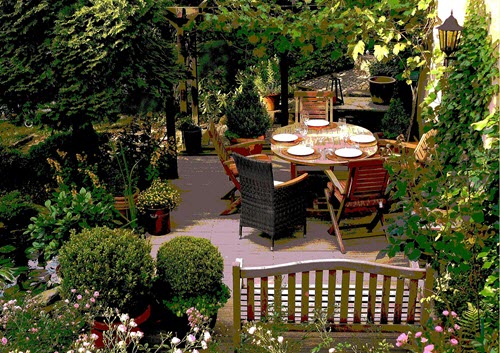
A terrace garden is a great solution for anyone living in a crammed flat or house with no no backyard. Terraces get plenty of sunshine. They are easy to maintain and are even great for growing organic vegetables and fruits and setting up a flower bed.
Terrace gardening is also highly therapeutic. Spend just half an hour in the morning and another half hour in the evening tending your plants. Your stress and anxiety will slowly disappear as will any breathing problems you have.
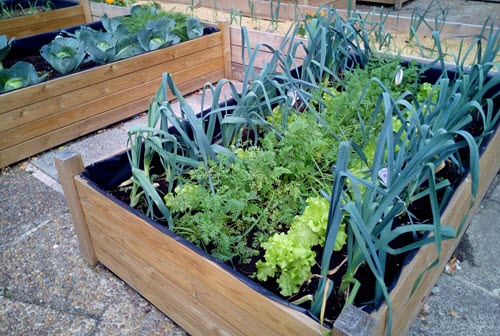
With a little extra effort, you'll also enjoy harvesting your own vegetables and fruits that are a 100% organic and pesticide free. If you're not into producing veggies, you can simply set up a herb and flower garden, or an exotic green landscape with a small spring decked with lights to unwind in the comfort of your home.
If you are one such person, looking for inspiration and ideas to set up your own terrace garden, hoping to grow your own organic vegetables without spending too much money and enjoy all the benefits of a healthy life right at home, this post will be your guide.
The Complete Guide to Organic Terrace Gardening for Beginners
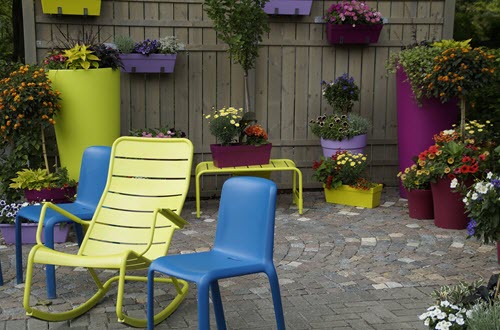
Requirements for Starting an Organic Terrace Garden
Setting up a terrace garden is not a luxury. Most items you need to get started with your organic terrace garden are available in local nurseries at reasonable prices. If you're too far away from a nursery, there are plenty of online stores you can buy plants, seeds and other gardening essentials from.
But, before you get started with the essentials, there is one key factor that plays a big role in terrace gardening – your mindset. Here are some pointers to remember when you start your dream garden project:
1. Set Aside 1 Hour from Your Schedule
Prepare to spend at least one hour in your day to tend to your terrace garden. Once the setup is working well, you will spend less time working and more time enjoying the benefits. Half an hour in the morning and half an hour in the evening should also be fine if you can't spend an entire hour at one stretch.
2. Be Prepared to Get Dirty
The fun part about gardening is that you can muck around in mud and water and manure. Its therapeutic as well, so be prepared to get your hands dirrrtyyyy.
3. Be Prepared to Deal with Insects and Pests
Nature is home to insects, bugs and other pests. If you set up a terrace garden, be prepared to meet, greet and beat all sorts of welcome and unwelcome visitors – sometimes even a monkey or two!
4. Have a Plan of Action
Its always easy to get over excited and grow too many things at one time. Restrain yourself! You have all the time in the world. Make a list of the plants you want to grow and how to plan to arrange them in your terrace. You can take action after you have drawn up a proper plan.
5. Be Prepared for Failures
As with everything in life, failure goes hand in hand with success – even with terrace gardening. You will meet with failures initially – you might overwater your plants or not pour enough of it; you may add too much manure or watch the mealy bugs make a meal of your precious plant. Don't be discouraged by failures. Learn from your mistakes and you'll be well on your way to owning a garden your neighbors will envy.
6. Research
The Internet is full of fresh new ideas, hacks and tricks to growing your garden. Spare some time to do research for new and inspiring ideas.
7. Be Prepared to Cut Your Losses
There may be times when you have to lose your favorite plant to save the others; a dreaded infection or rot in your beautiful rose plant is likely to spread and destroy other plants as well. It will be a painful and difficult decision to destroy a plant you love but you must steel your mind for the sake of the other plants and cut your losses before it is too late.
Now that you are mentally prepared, here is a checklist of the items you need to get started.
Organic Terrace Gardening Checklist
Waterproofing
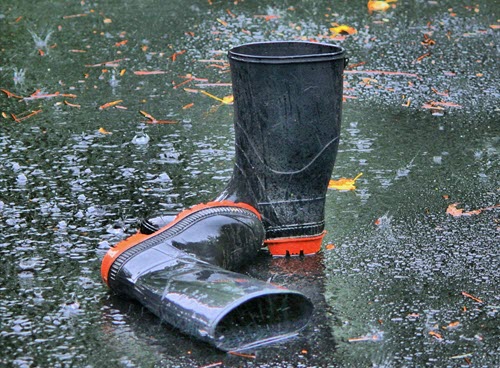
One of the first things you need to do before setting up your terrace garden is to check your terrace for water proofing. Buy a thick tarpaulin sheet and cover the ground surface of your terrace if you're doing it yourself. You can also call professionals to help you waterproof your terrace. Also check that your foundation is strong enough to hold the weight of the pots.
In most cases, if your house is built by professionals with the right proportion of sand and cement, you should have no problems supporting the extra weight. If you don't like the idea of tarpaulins, you can buy pot saucers that will hold extra water that is drained off pots. Either way, make sure you have a good water proof plan for your terrace.
Soil
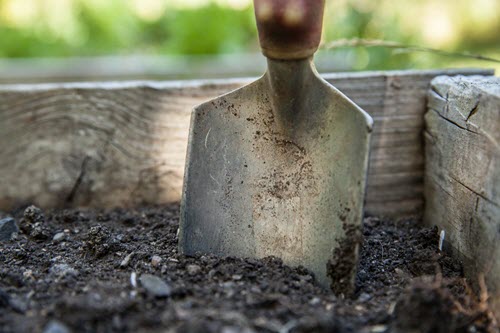
Soil that is properly conditioned and nourished is the key to growing strong and healthy plants. Chemically treated soil will not only seep into the food system, it can also harm and destroy beneficial bacteria, worms and other microbes in the soil.
Find a good source from where you can buy soil. Most nurseries sell well nourished soil which is a mix of soil, vermicompost and compost coir but that might be expensive. If you want a cheaper option, you can buy some ingredients, create your own compost and do the soil mix yourself.
Plant Containers

Containers are the key to setting up your plants. You can go frugal with any old paint boxes, wooden crates, or plastic bottles (I prefer to avoid plastic though as they easily break off in the hot sun and for other obvious reasons) or you could buy earthen pots, UV treated grow bags, cement pots and so on. Some creepers and flowering plants will look good in hanging pots and that's worth considering too.
Whatever containers you use, they need to have a small opening at the bottom to release any extra water that you pour for the plants. However, this small hole should be blocked with a small piece of flat stone to prevent the soil from draining away as well.
Seeds
You'll need good quality seeds to grow your veggies. You can usually start with tomatoes, lady's fingers and bitter gourd. Seeds can be picked up from local nurseries or you can source them from the vegetables you purchased at the market. If you've got kindly neighbours, you might even request them for seeds and saplings.
Water
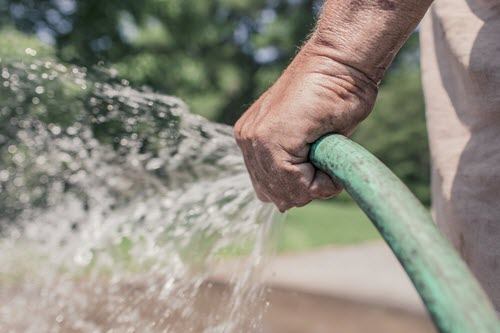
You can use a hose to water the plants in your terrace or buy a small watering pot/ kettle if you prefer. Alternately, you can simply fill a bucket of water, carry it around the terrace and pour water using a smaller container. If you travel often and don't have anyone to help you out with the watering, you can consider drip irrigation.
Again, you can go creative and use plastic bottles to set it up or buy a ready made system and have a professional set it up for you. Whatever is your medium of watering, make sure to have the source close by. You cannot carry water all the way from inside your house to the terrace.
Pesticides
Pests are going to be visiting your garden no matter what kind of protection you take. And the best way to combat them is by using pesticides – not the dangerous artificial ones available in the market, but natural ones you can prepare at home yourself. A mixture of baking soda, cooking oil and water can be sprayed on plants to avoid fungal infections; beer is an easy distraction for slugs and neem oil is the aphid's nightmare.
Garden Shades and Covers
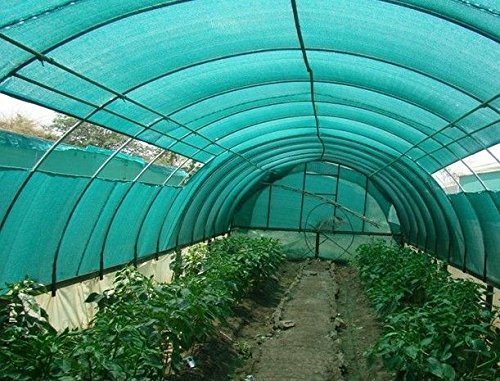
If your terrace is scorching hot, you can set up a garden shade. Garden shades are lightweight and UV stabilized to prevent degradation. They will protect your plants from excessive heat and rain. You can get creative with mosquito nets if you're on a tight budget.
Steps to Set Up Terrace Garden
Now that you have all the basic ingredients to setting up an organic terrace garden, its time to move on to the actual procedure for getting started.
Install Wind Barriers (Optional)
One of the biggest problems you're likely to face with a terrace garden is high speed winds that can break tender shoots or plants with tender stems. If you have a good budget, you can install a solid wind barrier or fencing to protect your plants. Garden shades are great but you need to clamp it sturdily to the roof-floor if they are to provide support to the plants.
Prepare the Layout
Visualize how your garden should look like and prepare a good layout considering the position of your terrace, the heat and light factors. You can place the tender or weak plants in a shady area of the terrace. Stronger plants that can withstand more heat can be placed in the sunnier parts. Place all the pots in a convenient location so that you can water them easily.
Prepare the Potting Mix

For a plant to grow strong and healthy, you need to provide it with all the right nutrients. A potting mix is therefore recommended. There is no one ideal potting mix solution and different experts offer different recommendations of preparing the potting mixture:
Option 1
Water the mixture mentioned below regularly for 3 days
- About 5 kgs of red soil, preferably free from chemicals
- About 500 grams of animal manure such as cow dung. You can get dry cow dung cake, burn it and add the ash to the soil as well.
- Neem oil or neem cake
- River sand weighing about 10 kgs
- Coconut fibre for water retention
- Vermicompost
Option 2
Combine equal proportion of coco peat , red sand, and vermicompost. Geekgardener recommends using 200 grams of bone meal, 200 grams of oil cake and 200 grams of wood ash for every 15 kilos of the above mixture. Let the mixture sit in a container for at least 3 weeks before you put it to use.
I simply use one part sand and 1 part compost that I prepare at home.
Plant Your Seeds
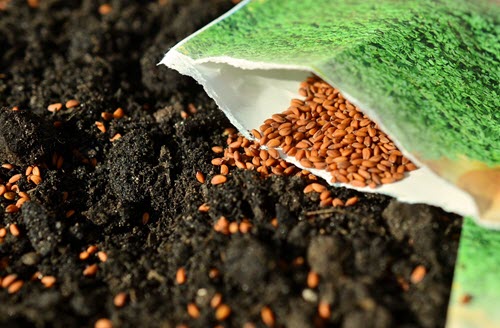
Once your soil is ready for use, you can start planting the seeds. You can plant seeds in a seeding tray and then transplant them to the pot or plant them directly. If you use a seeding tray, you need to fill it with the potting mixture, plant the seed about an inch deep in each of the sockets and sprinkle them with water. After 5 or 6 leaves spring out or the plant is about 3-4 inches in height, you can transplant each plant to a pot.
During the transplanting process, avoid exposing the root of the sapling to direct sunlight because the roots will dry up and die. Do the transplantation in a shady area of the house or in the evenings.
Tip: When you remove the sapling from the seed tray, take it along with the sand and seal the plant into the pot with the sand.
Manage Pests
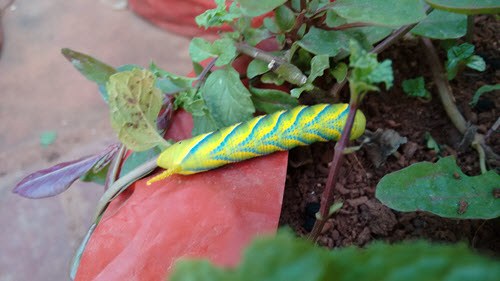
Once your plants start to grow, you will have to start dealing with pests like ants, mealy bugs and aphids. There are different ways to deal with them organically but not all of them work the way we like them to. You need to spend time trying various pest management solutions. That can be the most exasperating part of managing your terrace garden.
Protect your Plants from Birds and Animals
Once your plants start to bear fruit, you need to cover it wire mesh or nylon wires to prevent birds and other tiny creatures like squirrels and rats from enjoying them before you do.
Conclusion
Terrace gardens are a simple, yet effective way of combating multiple issues plaguing our city lives. If you want to live a healthy and stress free live, consider setting up a garden in your home. You'll be surprised how much joy and relaxation it brings to your life.
I also encourage you to sign up for my free guide Terrace Gardening for Beginners. In the guide, I share a lot more details to help you get started with your garden.
If you have any questions, you can reach out to me via the Contacts page or with your comments below.
Preparing Floor For Terrace Gardening
Source: https://myorganicgarden.in/guide-organic-terrace-gardening-for-beginners/
Posted by: taylorsockle.blogspot.com

0 Response to "Preparing Floor For Terrace Gardening"
Post a Comment